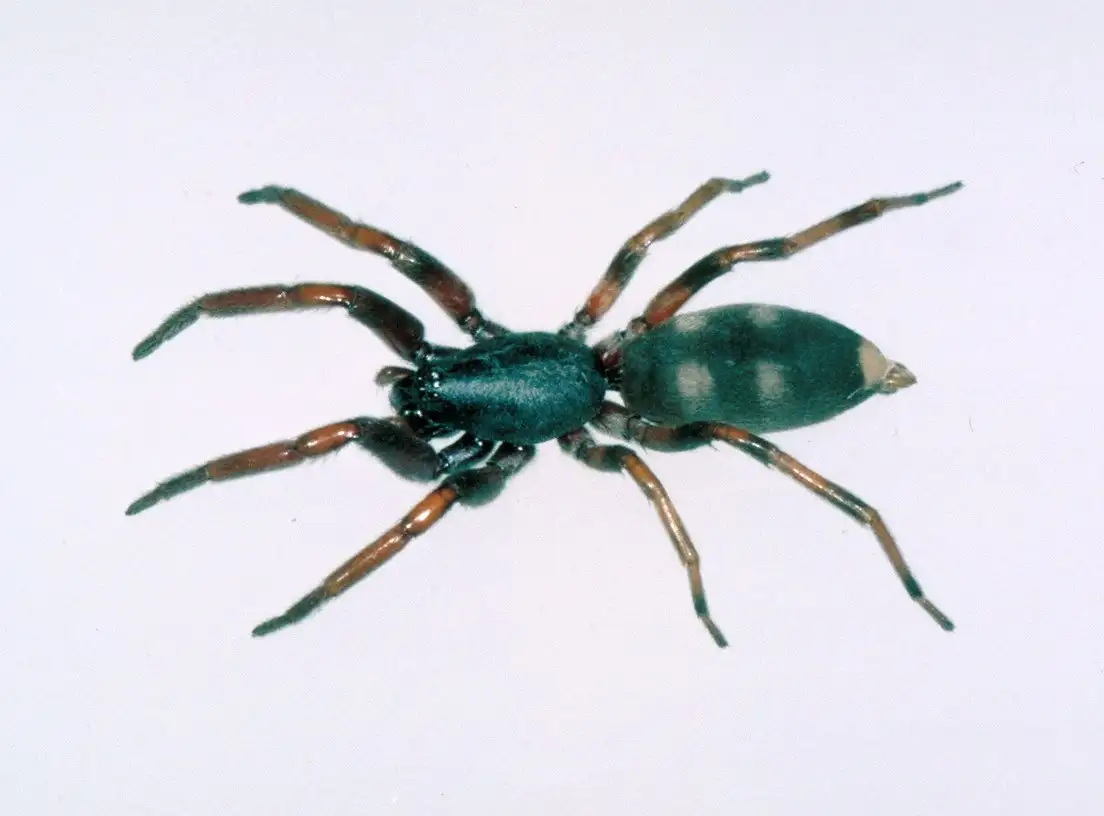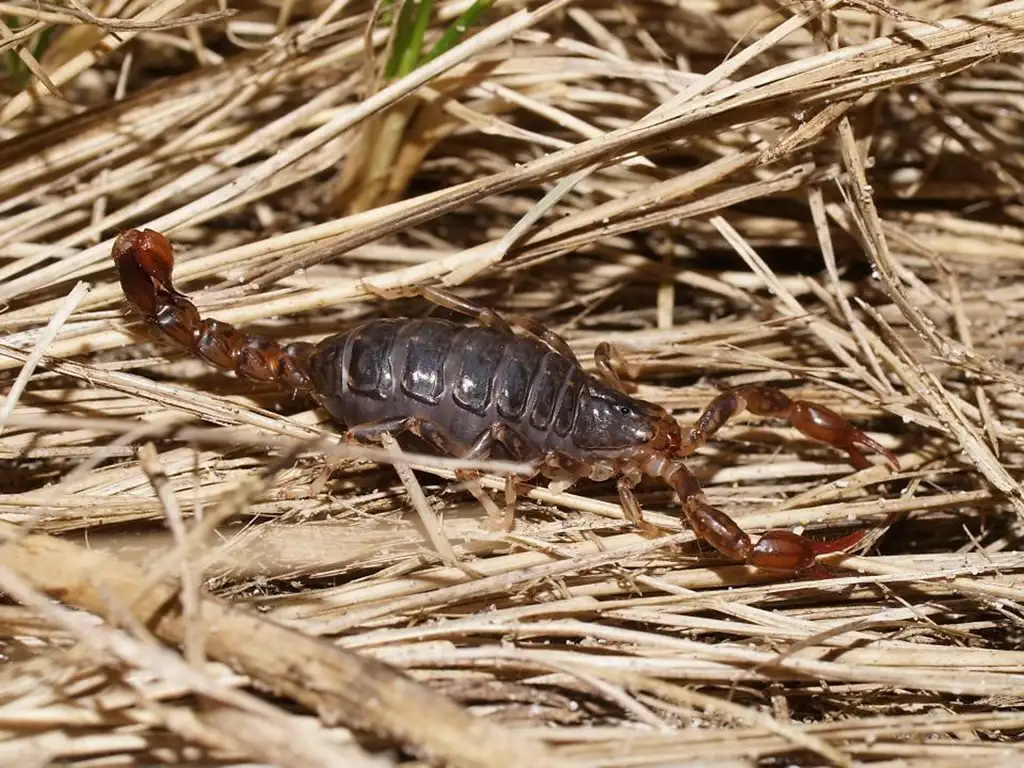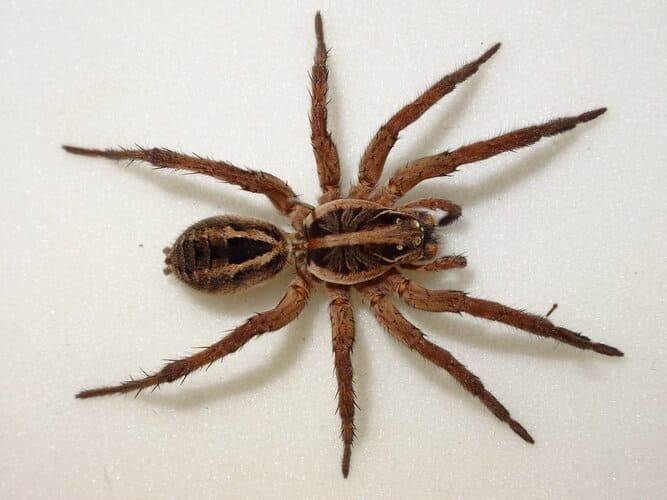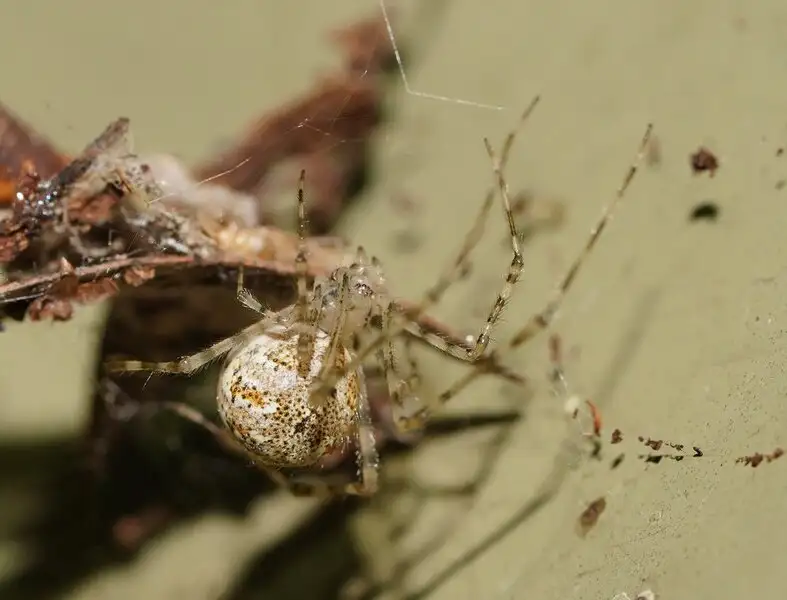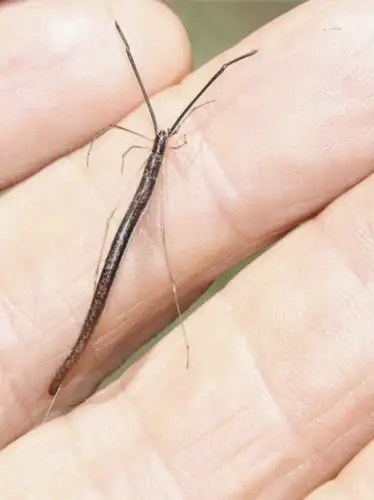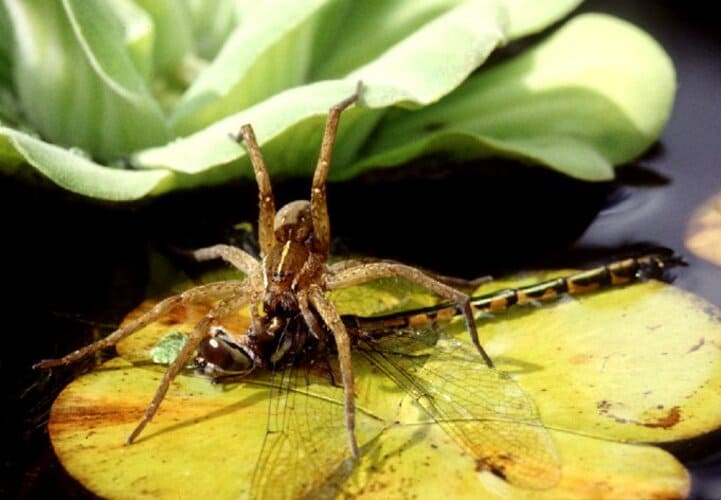White-tailed Spider
IUCN
LCBasic Information
Scientific classification
- name:White-tailed Spider
- Scientific Name:Lampona cylindrata and Lampona murina (family Lamponidae)
- Outline:Arthropoda
- Family:Lamponidae White-tailed spider
Vital signs
- length:Adult females about 12–18 mm body length, males about 10–15 mm, with a leg span over 2–3 cm
- Weight:A small, slender spider weighing on the order of tens to around a hundred milligrams per individual
- lifetime:Estimated natural life span of about 1–2 years depending on climate and food supply
Feature
Slender, dark, nocturnal hunting spiders with a distinct white patch at the tip of the abdomen that prey mainly on other spiders and sometimes enter houses.
Distribution and Habitat
Leaf litter, under stones and bark and in crevices outdoors, as well as houses and other buildings where warm, dry, sheltered hiding places and other spiders are available.
Appearance
Dark grey to blackish-brown, cylindrical body with a pale or white oval patch at the rear of the abdomen and moderately long legs.
Details
The White-tailed Spider is the common name for a small group of spiders with a distinct white patch at the tip of the abdomen, most notably Lampona cylindrata and Lampona murina. These spiders belong to the family Lamponidae and are native to Australia, where they are frequently found in houses and gardens. They are well known for actively hunting other spiders, including common house spiders.
Taxonomy & Names
Common English name: White-tailed Spider
Representative species: Lampona cylindrata, Lampona murina
Family: Lamponidae
Class & order: Arachnida, Araneae
Appearance
White-tailed spiders are not large, but they are slender, dark and easy to recognise once you notice the “white tail”:
Body size: adult females are about 12–18 mm in body length, males about 10–15 mm, with a leg span that can exceed 2–3 cm;
Colouration: the body is typically dark grey, blackish-brown or charcoal with some lighter markings; the legs are relatively long and robust;
White tip: at the rear end of the abdomen there is usually a clear white or pale oval patch, sometimes accompanied by smaller pale spots towards the front;
Body shape: the spider has a somewhat cylindrical, elongated abdomen and a narrower front body, giving a streamlined appearance.
At night a White-tailed Spider often appears as a fast-moving, dark spider with a pale tip to the abdomen when caught in a torch beam.
Distribution & Habitat
White-tailed spiders occur mainly in eastern and southern Australia, with some populations in New Zealand and nearby regions. They occupy both natural habitats and human structures:
natural sites such as leaf litter, under stones, beneath bark and in rock crevices;
around houses in garden walls, retaining walls, landscaping rocks and sheds;
inside buildings in piles of clothes, folded bedding, curtains, shoes and cardboard boxes.
They favour warm, dry and sheltered places and readily follow their prey – other spiders – into homes.
Behaviour & Diet
White-tailed spiders are nocturnal wandering hunters rather than web-builders:
during the day they hide in cracks, under objects or within folded fabrics;
at night they roam over floors, walls and garden structures searching for prey;
they specialise in hunting other spiders, especially small web-builders such as cobweb spiders, but will also take insects and other small arthropods.
When they encounter a spider on its web or moving along a surface, White-tailed Spiders approach quickly, bite and subdue the prey, then retreat to a sheltered spot to feed.
Bites & Medical Significance
White-tailed Spiders possess venom for subduing prey, and bites to humans can occur, usually when the spider istrapped against the skin in clothing, bedding or shoes. For many years they were widely blamed for serious “necrotic” skin ulcers. However, modern medical studies have not found strong evidence that their bites routinely cause large areas of tissue death.
Most well-documented cases suggest that:
bites cause local pain, redness, burning or itching at the site;
some people experience mild general symptoms such as headache or nausea, usually resolving within hours or a day or two;
severe complications appear to be rare and are more likely associated with individual allergy or secondary infection.
The current view is that the White-tailed Spider has a medically mild bite for most people, though it can certainly be uncomfortable. If a bite is suspected, recommended first aid includes:
washing the area with soap and water;
applying a cold pack to reduce pain and swelling;
seeking medical advice if symptoms are severe, spreading, or accompanied by fever or signs of allergy.
Ecological Role & Interactions with People
In natural ecosystems, White-tailed Spiders act as mid-sized predators that help regulate populations of other spiders and small invertebrates. Around houses they may be viewed as unwelcome visitors, but they are also quietly reducing the number of other spiders and insects.
Ways to reduce close contact with White-tailed Spiders include:
shaking out clothing, towels and shoes that have been left on the floor or in storage;
reducing clutter in dark corners, wardrobes and under beds;
sealing obvious gaps around doors, windows and skirting boards to limit spider entry.
If you find a White-tailed Spider indoors, it is usually sufficient to gently capture it in a container and release it outside, rather than killing it, thereby allowing it to continue its role as a predator in the garden.
References
Isbister, G.K. & Gray, M.R. 2003. White-tail Spider bite: a prospective study of 130 definite bites by Lampona species. Medical Journal of Australia 179: 199-202.
Isbister, G. & Gray, M. 2000. Acute and recurrent skin ulceration after spider bite Medical Journal of Australia 172: 303-304
Platnick, N.I. (2000). A relimitation and revision of the Australasian ground spider family Lamponidae (Araneae: Gnaphosoidea). Bulletin of the American Museum of Natural History 245: 330 pp.
Sutherland, S. & Sutherland, J. 1999. Venomous Creatures of Australia. Oxford University Press, South Melbourne Vic.
White, J. 1998. Response to Chan, S.W. 1998. Recurrent necrotising arachnidism. Medical Journal of Australia 169: 642-643
FAQ
Q1. Are White-tailed Spiders really dangerous or “flesh-eating”?
Current evidence does not support the idea that White-tailed Spider bites routinely cause severe necrotic ulcers.
Most confirmed bites produce local pain, redness and mild swelling that gradually resolve. Serious tissue damage is uncommon
and may involve other factors such as infection or individual sensitivity.
Q2. Why are White-tailed Spiders often found in clothes and bedding?
They seek warm, dry, sheltered hiding places during the day, and folded clothes, bedding, curtains and shoes provide
ideal retreats. These locations are also close to other small spiders and insects that they can hunt at night.
Q3. How can I reduce the risk of being bitten?
Shake out clothing and shoes that have been left on the floor or in sheds, keep clutter to a minimum in dark corners,
and avoid handling spiders directly. These steps greatly reduce the chance of trapping a spider against your skin.
Q4. What should I do if I find a White-tailed Spider in my house?
You can place a jar or cup over the spider, slide a piece of card underneath and release it outside in a sheltered spot.
This avoids killing a useful predator while keeping it away from living areas.

